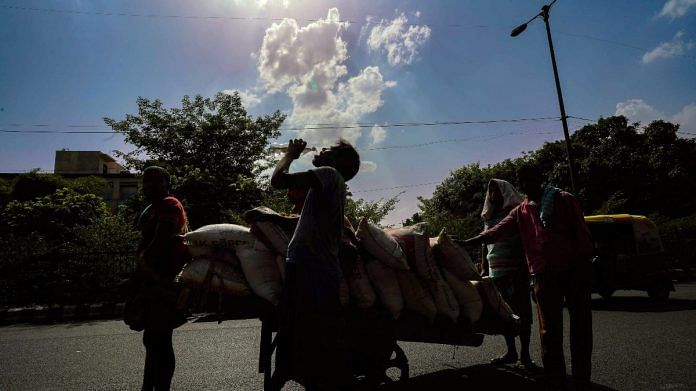New Delhi: The India Meteorological Department (IMD) on Monday withdrew the heat wave warning for isolated places in Kutch and Konkan regions due to sea breeze leading to a drop in temperatures, officials said. The Met office had on Sunday said that isolated heat wave “conditions are likely over Kutch and Konkan during the next two days”. Officials had said it was the earliest a heat wave alert was issued for these regions.
“These regions have been seeing clear skies due to the lack of strong western disturbances. The feeble WDs impacted only the western Himalayan region, mainly Jammu and Kashmir. Temperatures in Uttarakhand and Himachal Pradesh, too, are high due to below normal precipitation,” said Naresh Kumar, a senior scientist at the IMD.
“We have withdrawn the heat wave warning for these regions with the temperatures showing a decreasing tendency due to sea breeze. Maximum temperatures are predicted to drop by two to three degrees Celsius in the next two-three days,” he said. “Maximum temperatures are very likely to be in the range of 36 degrees Celsius to 38 degrees Celsius over many parts of Gujarat during the next 24 hours,” the IMD said in a statement issued at 12:45 pm on Monday.
The mercury is predicted to drop by two to three degrees Celsius in west India over the next three days and no significant change is likely over the rest of the country in the next five days, it said.
In Delhi, the maximum temperature had soared to 31.5 degrees Celsius on Sunday, which was seven notches above normal and the highest in February in two years.
It is predicted to settle around 33 degrees Celsius on Monday. A heat wave is declared if the maximum temperature of a station reaches at least 40 degree Celsius in the plains, at least 37 degrees Celsius in coastal areas and at least 30 degrees Celsius in hilly regions, and the departure from normal is at least 4.5 degrees Celsius.
In March last year, the warmest recorded in the country since 1901, heat caused a decline of 2.5 per cent in wheat yields. The weather department had attributed the unusual heat to the lack of rainfall due to the absence of active western disturbances over north India and any major system over south India.
The country as a whole had logged just 8.9 mm of rainfall, which was 71 per cent less than its long period average rainfall of 30.4 mm. – PTI
This report is auto-generated from PTI news service. ThePrint holds no responsibility for its content.
Also read: Three dozen dead as Brazil rains cause calamity






